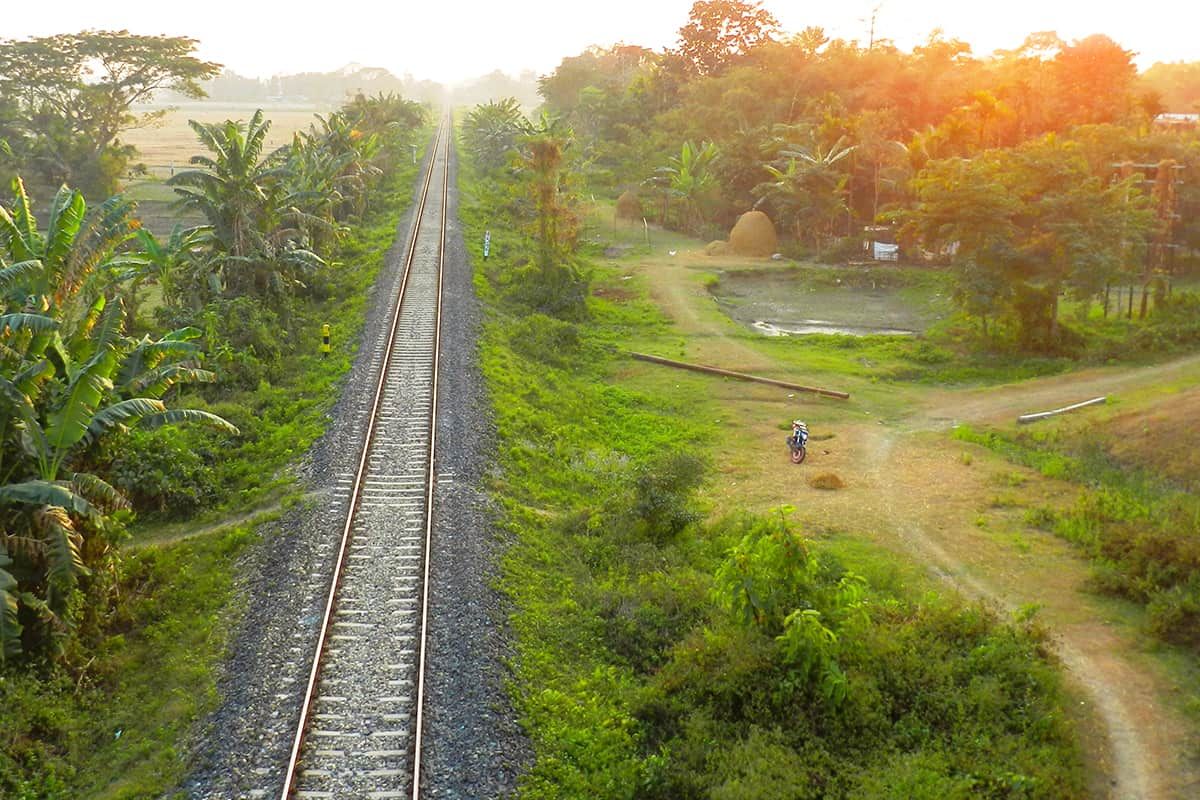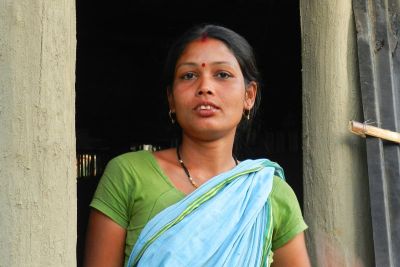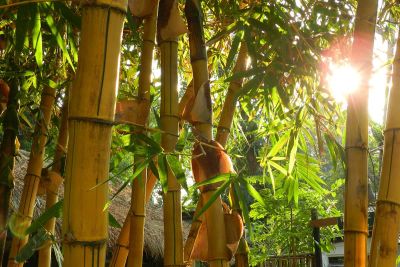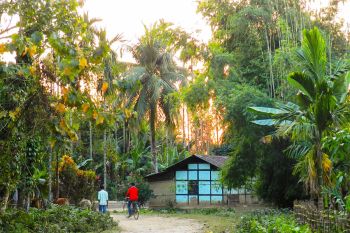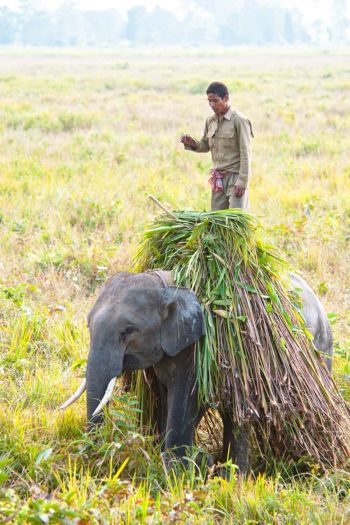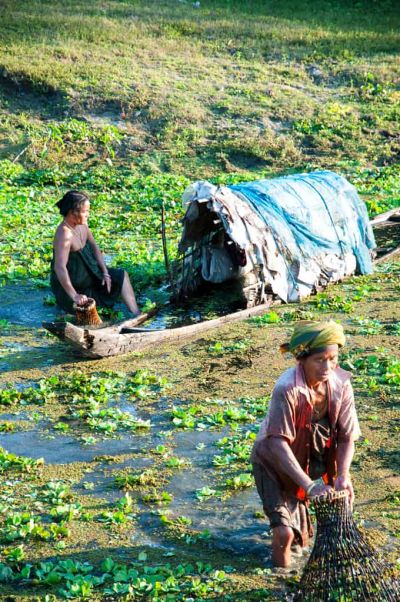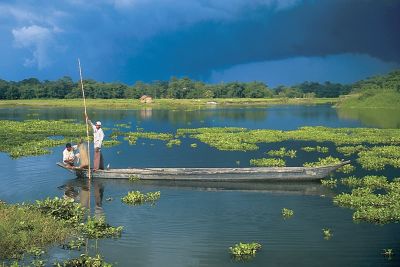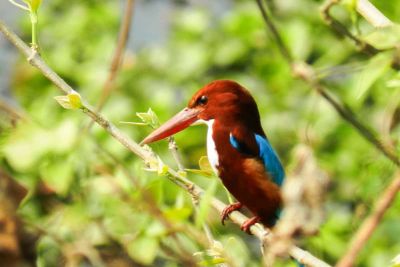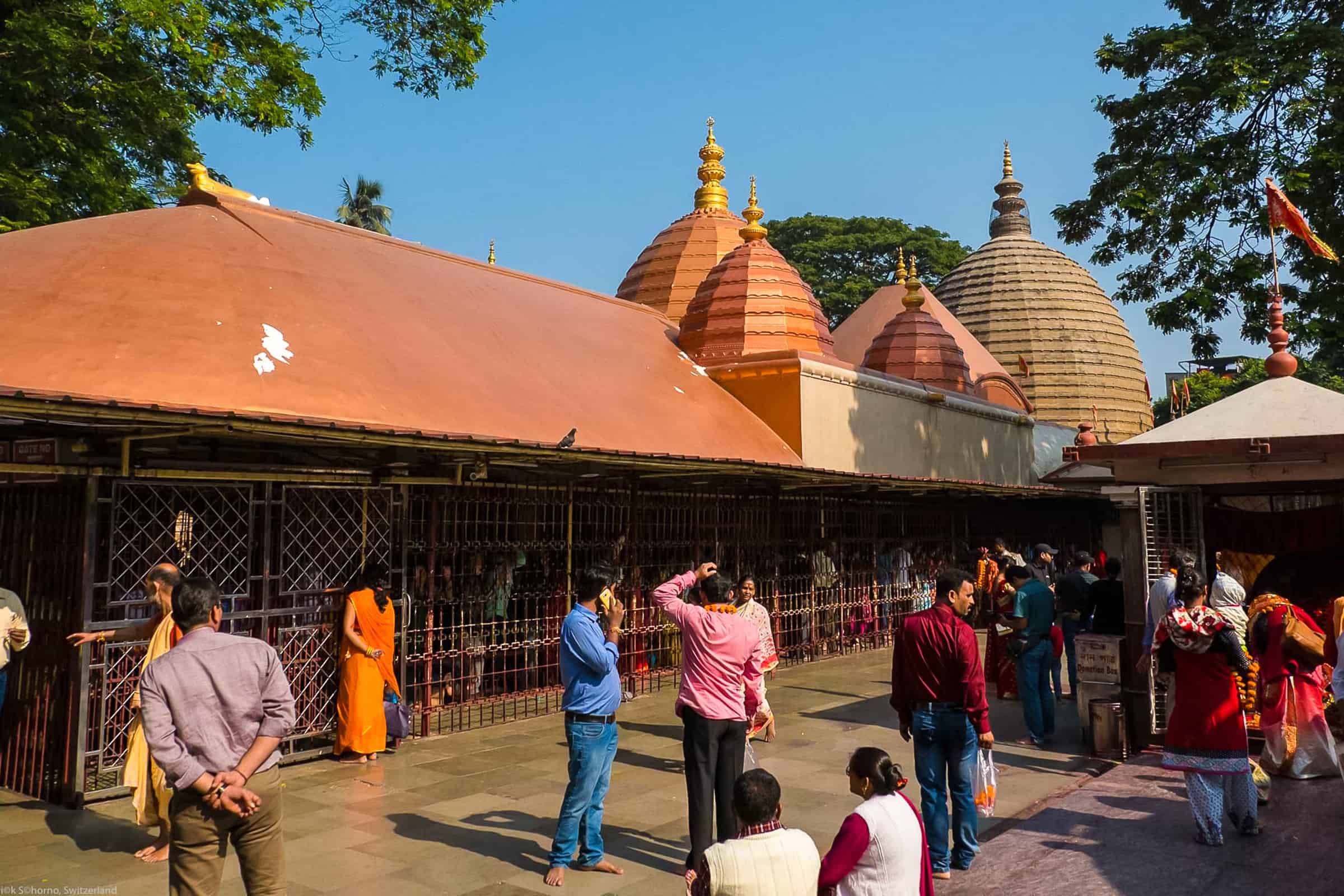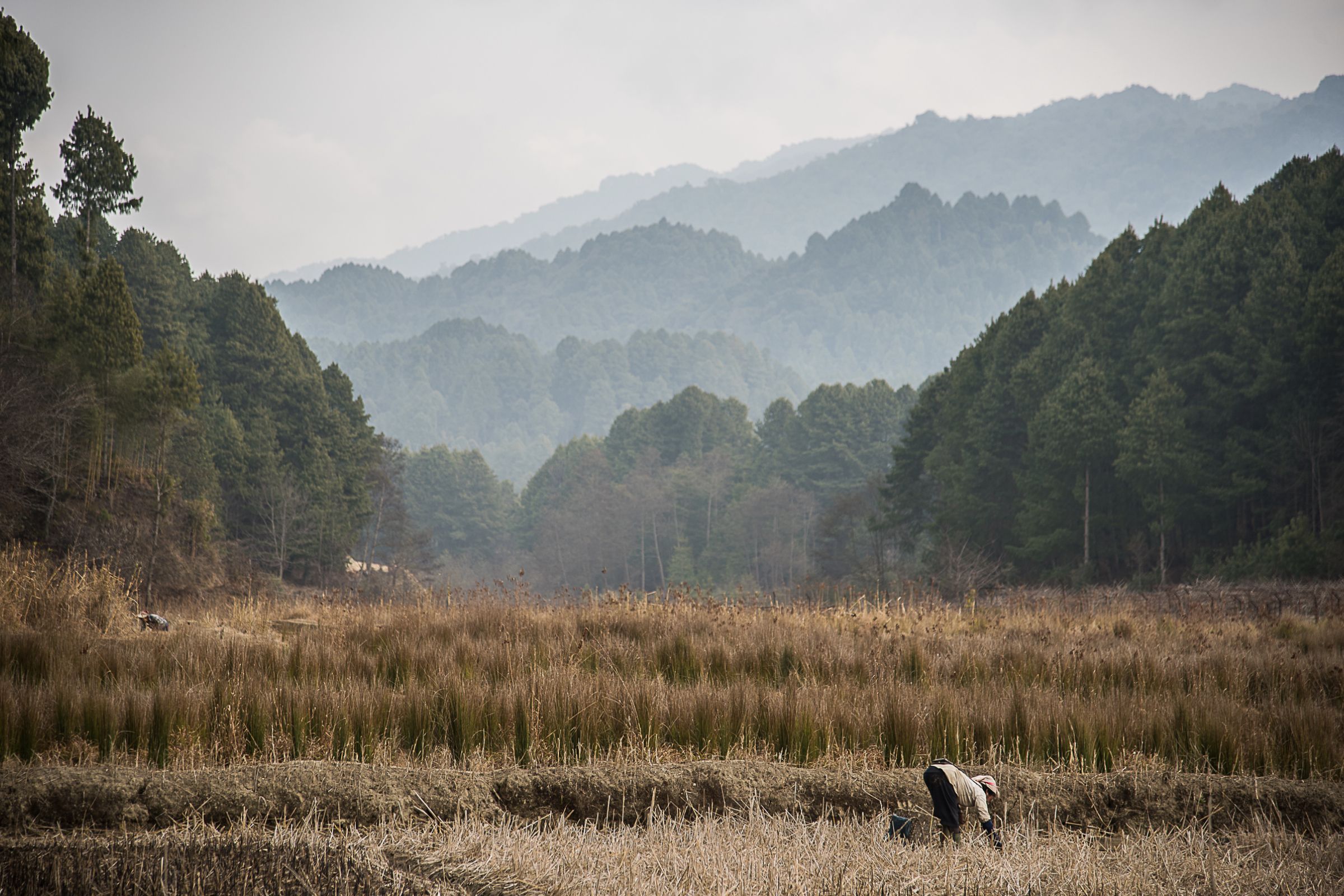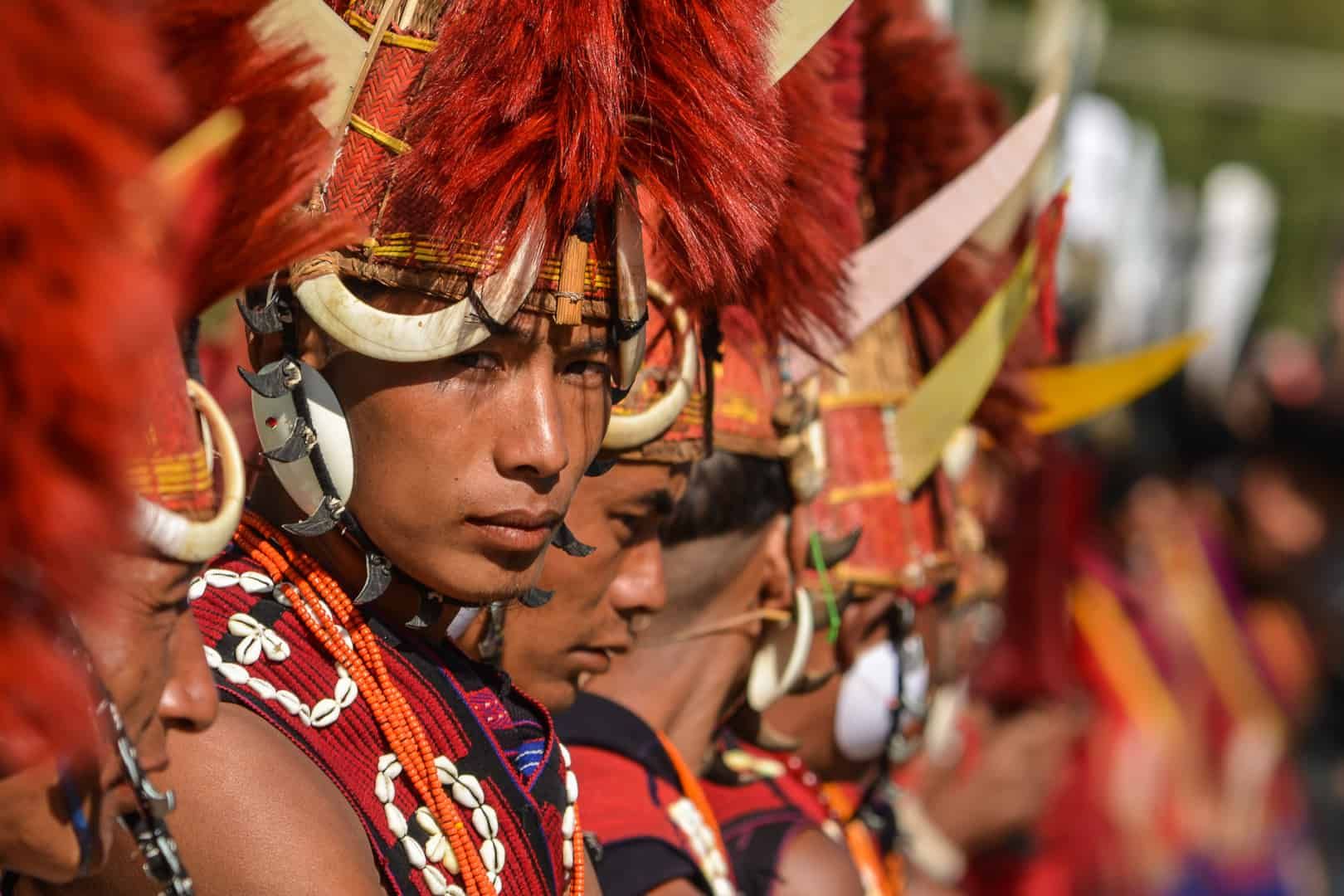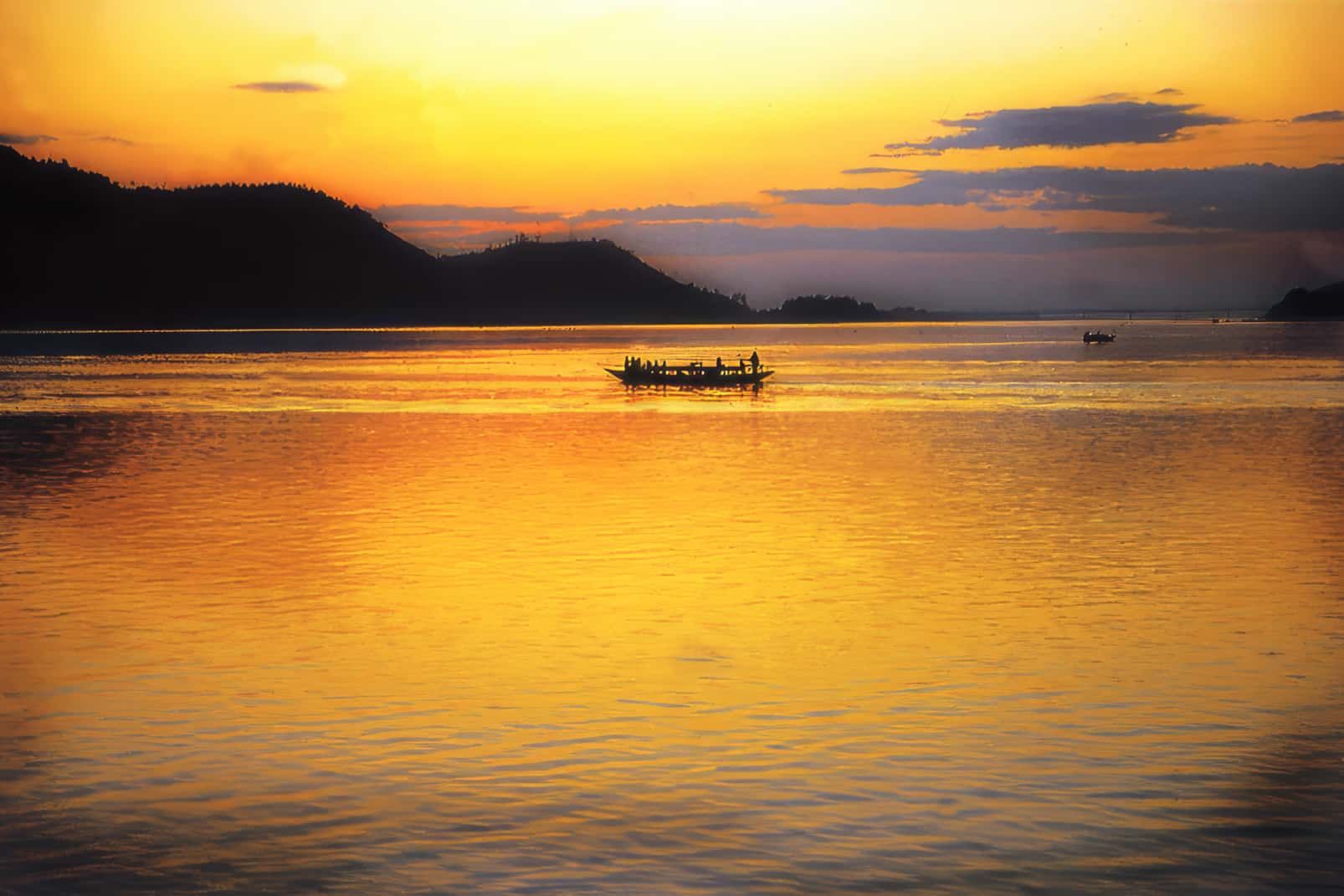Assam
General information
The almost 80,000 km² surface area of the state of Assam lies in the remote northeast of India, surrounded by the six sister states of West Bengal, Arunachal Pradesh, Meghalaya, Nagaland, Manipur, Tripura and Mizoram. Assam also has borders with Bhutan and Bangladesh. The appearance of the emerald-green region is characterized above all by a mighty river: the Brahmaputra, whose valley winds its way through the foothills of the Himalayas over a length of 1000 and a width of up to 100 kilometers.
During the monsoon season, this mighty river repeatedly changes its course and floods large parts of the country. This initially seemingly destructive, but above all life-giving power of the river manifests itself in extensive forests with exotic flora and fauna, green tea gardens and fertile rice fields.
The friendly population of Assam settles mainly in colorful villages nestled picturesquely in the hills, but also in some bustling cities that offer the comforts of modern life. Traditionally, the locals are predominantly Hindu, so that visitors can, for example, visit a number of temples on the river island of Majuli and in the city of Guwahati. The river island of Majuli, one of the largest in the world, is home to the Assamese Vaishnava culture and is an extremely interesting excursion destination. However, the religion of Islam – which is rather untypical for India due to immigrants from Bangladesh and is already in second place in terms of the number of believers – has also left its architectural traces and enriches the image of the villages. As almost everywhere in the north and northeast of India, however, it is above all nature that makes a vacation in Assam something very special.
The Kaziranga National Park, which was declared a UNESCO World Heritage Site in 1985, is home to the rare Indian rhinoceros, Indian elephants, the Bengal tiger, wild water buffalo and the rare jagged deer. Other large predators such as the sloth bear, the Asiatic wild dog and the Indian leopard give a safari in this park a wonderfully quiet thrill, while muntjac deer and barasingha, for example, tempt you to pause quietly so as not to disturb the shy animals. Kaziranga National Park, like the numerous other game parks and nature reserves, will also delight ornithologists, as the variety of birds is on a par with that of the mammals.
Lovers of fine tea have the opportunity to see the tea plant from the first green shoots to the hand-picked, dried leaf in the largest contiguous tea-growing fields in the world and to learn the traditional tea ceremony.
Whether it’s a comfortable river cruise, a safari in a powerful jeep or an uplifting ride off the beaten track on a wide elephant back – a trip to Assam offers you a wealth of unforgettable impressions in a country that shows you the unbridled creative power of the monsoon like nowhere else in the world.
National parks:
In Assam, the Kaziranga National Park invites you to observe the ornithological diversity. Indian rhinoceroses, Bengal tigers, water buffaloes and many other exotic animal species, some of which only exist here, can also be observed. As a special highlight, you cannot only do these tours in an off-road vehicle, but also roam through the forests on the back of an elephant, feeling its raw power under your hands. In Sikkim, the region in the northeast of India, an amazingly diverse ecosystem awaits you in the Khangchendzonga National Park. The biodiversity preserved here, the diverse abundance of birds, the wide range of different mammals including the snow leopard as well as the almost unimaginable number of different reptiles, amphibians and insects are impressive on a trekking tour and can be ideally experienced on foot. Stopping, listening and seeing in the midst of this pristine diversity is probably one of the most intense experiences that a trekking vacation in India has to offer.
In addition to these outstanding destinations for travelers to India who want to experience the country’s nature up close, the east in particular offers some almost unknown and sometimes very remote treasure troves for botanists, orchid lovers and ornithologists. We can advise you on hotspots in Sikkim and wild Arunachal Pradesh that will appeal to true enthusiasts for whom the intense experience of nature is more important than convenience.
River cruises:
River trips: on the waterways of the mighty Brahmaputra
The river delta of Meghna, Ganges and Brahmaputra is both a blessing and a curse for Bangladesh, as these mighty rivers branch out into countless watercourses and repeatedly cause widespread flooding of the entire area. These can be dangerous for humans and their civilization, but Mother Nature has taken advantage of the special nature of the region and created one of the largest contiguous mangrove forest areas in the world with unique biodiversity. This fascinating primeval forest – protected as the Bandarban Mangrove Reserve, for example – is home to many endangered animal and plant species and enchants visitors with the blooming splendor of man-high poinsettias, water hyacinths, jasmine, water lilies, roses, hibiscus, bougainvillea, magnolias and wild orchids.
This is the habitat of many different mangrove species and also the unique Sundari tree, Bengal tigers, fishing cats, elephants, ruffed bears, sloth bears, clouded leopards, leopard cats, rhesus monkeys, various deer species, wild boars, jackals, gibbons, lorises, bantengs, gaurs, countless bird species, Ganges dolphins, Irrawaddy dolphins, dugongs and many more. They have all found an important refuge here. This very special, unique habitat has been a nature reserve since 1977 and has also been awarded the title of UNESCO World Heritage Site since 1997.
Cross the bridge with us into the mystical world of the water beneath the trees and discover it in the only way that seems appropriate: during a river trip, where often no sound can be heard apart from the lapping of the waves against the hull of the boat and the incessant calls of cicadas and birds. An excursion out onto the open waters of the Bay of Bengal is also wonderful and rewarding. A few kilometers from the coast, this area is home to magnificent biodiversity, marine mammals such as the small Indian porpoise and Indo-Pacific humpback dolphins; in the deeper regions also East Pacific dolphins, slender dolphins, Indo-Pacific bottlenose dolphins and Bryde’s whales. This biodiversity hot spot is also known as the “Swatch-of-No-Ground”, a unique region that encompasses the area of the curved river delta of the Sundarbans in Bangladesh, the adjacent coastal waters and the offshore open sea.
A multi-day river cruise on the Brahmaputra itself is also worthwhile, during which you follow the mighty river almost silently and enjoy the view of villages, tea gardens or the untouched nature of a national park bordering the riverbank. During the cruises, you stay in comfortable, private cabins on the river boats and enjoy the comfort of shower rooms and toilets. You can also take your meals on the boat and enjoy the fantastic panoramic view from the shaded sun deck at all times.
Of course, we also organize day trips lasting several hours with canoe and rafting tours, which can be perfectly integrated into your travel program depending on the destination.
Our trips in Assam
Best time to travel
Average temperatures in °C
| Location | Jan – Mar max /min | Apr – Jun max / min | Jul – Sep max / min | Oct – Dec max / min |
| Paro 2200 m.a.s.l. Bhutan | 9 – 14 / 0 – 5 . | 17 – 25 / 4 – 14 | 23 – 26 / 11 – 15 | 11 – 18 / 1 – 7 |
| Punakha 1300 m.a.s./ | 16 – 21 / 4 – 9 | 24 – 31 / 11 – 19 | 29 – 32 / 19 – 21 | 15 – 27 / 7 – 18 |
| to approx. 3000 m.a.s.l./ | -5 to + 18 | + 5 to + 18 | + 11 to + 20 | -5 to + 15 |
| to approx. 4000 m.a.s.l. | -15 to + 9 | -5 to + 15 | + 1 to + 13 | -15 to + 12 |
| to approx. 5000 m.a.s.l./ | -20 to + 8 | – 10 to + 11 | – 3 to + 10 | – 18 to + 8 |
Average precipitation in mm & number of rainy days
| Thimpu, Bhutan | Jan | Feb | March | April | May | June | July | Aug | Sept | Oct | Nov | Dec |
| max | 10 | 15 | 25 | 32 | 30 | 54 | 100 | 106 | 61 | 24 | 8 | 3 |
| min | 4 | 6 | 10 | 13 | 20 | 24 | 28 | 27 | 23 | 10 | 2 | 1 |
